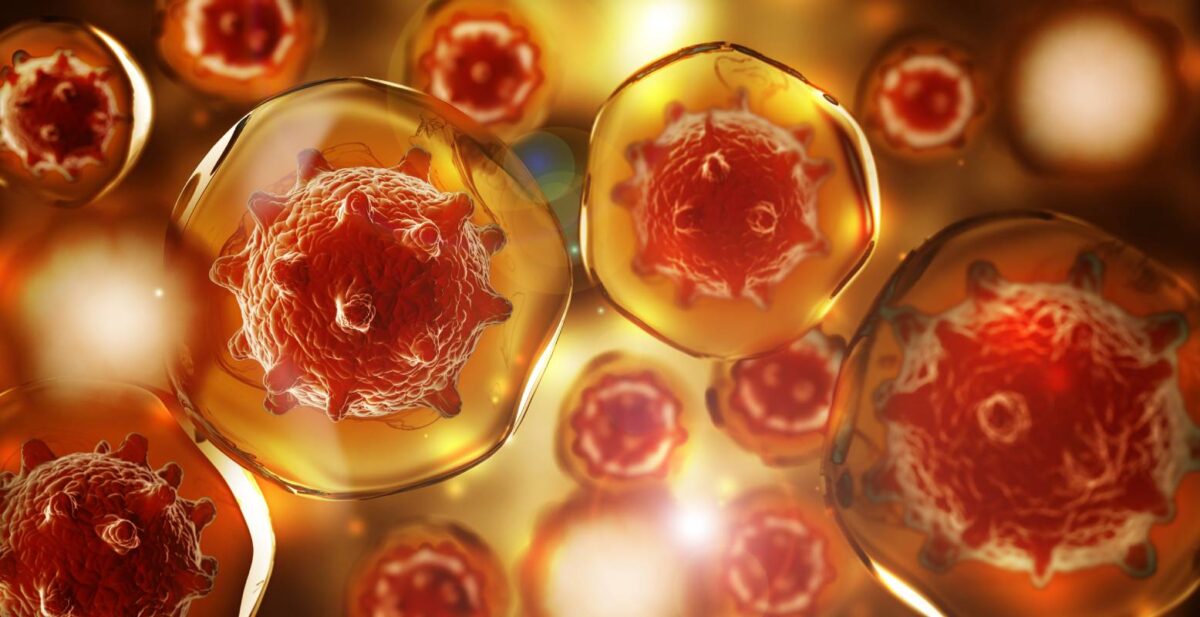HIV/AIDS: Mechanism, Treatment, and Vaccine Progress

Human immunodeficiency virus (HIV) causes acquired immunodeficiency syndrome (AIDS), which damages the immune system and renders the infected individual vulnerable to future infections.1 AIDS was first recognized in 1981 when young gay men began rapidly succumbing to opportunistic infections (OIs).2 In the following years, researchers isolated a new human retrovirus from lymphoid ganglions that was confirmed to be the cause of AIDS and that enabled blood tests for HIV.3 HIV is only transmitted through body fluids such as blood, semen, and breast milk.4 In 2020, there were approximately 37.6 million people living with HIV and 690,000 deaths from AIDS-related illness.5 Current treatment methods for HIV significantly improve life expectancy, though vaccine development is still in progress.
HIV targets CD4+ T cells via a high affinity interaction between the envelope glycoprotein gp120 on its surface and the CD4 molecule on the T cell membrane. After this binding, viral nucleocapsids release the viral genome and enzymes, such as reverse transcriptase, into the target cell, which interact to synthesize viral double-stranded DNA. The viral DNA is translocated into the nucleus and integrated into the host genome, resulting in viral genes being transcribed and translated into the viral proteins that form virions, which bud off from the host cell membrane and can infect other cells.6 HIV can also infect monocytes, which are large phagocytic white blood cells, by interacting with their CCR5 co-receptors.7
As is the case for any foreign pathogen, the body’s immune system mounts both an innate and adaptive immune response to HIV. However, since HIV targets some of the very components critical to the immune response, such as CD4+ T cells and tissue macrophages, the response is inherently limited (HIV has also evolved mechanisms to evade type I interferons, an important component of the immune system’s antiviral arsenal).8 The destruction of these immune cells is what can ultimately culminate, usually several years after HIV infection, in AIDS.
No cure or vaccine for HIV currently exists, but antiretroviral therapy (ART) is an extremely effective treatment for the virus. Several classes of these drugs exist, all of which interfere with the virus’s ability to replicate.9 ART is recommended for all people with HIV regardless of how long they’ve been infected and can lower one’s viral load to undetectable levels, which also makes it virtually impossible to transmit the virus to a sexual partner.10 In a highly controversial 2018 experiment, Chinese scientist He Jiankui used CRISPR-Cas9 gene editing technology to disable the CCR5 gene in human embryos, a technique that could theoretically induce HIV immunity but will likely not reach patients in the near future due to current prohibitions enforced by most governments against gene editing in human embryos.11
A viable HIV vaccine has not been developed since the beginning of the HIV epidemic nearly four decades ago. HIV, as an RNA virus, replicates with low fidelity; approximately one mutation is generated during each round of genome replication.12 As such, it is difficult to engineer a vaccine that can keep up with each iteration of the virus. An additional complication is the lack of a model for natural immunity since total recovery from HIV infection is effectively impossible. Researchers therefore cannot use an immune response such as antibody production to learn how the immune system can effectively eliminate HIV.13 Two HIV vaccines are currently in clinical trials, with expected completion occurring within the next few years14: one hopes that they will prove successful.
References
- “HIV/AIDS.” Mayo Clinic, Mayo Foundation for Medical Education and Research, 13 Feb. 2020, www.mayoclinic.org/diseases-conditions/hiv-aids/symptoms-causes/syc-20373524.
- Sharp, P. M., and B. H. Hahn. “Origins of HIV and the AIDS Pandemic.” Cold Spring Harbor Perspectives in Medicine, vol. 1, no. 1, 2011, doi:10.1101/cshperspect.a006841.
- Barre-Sinoussi, F, et al. “Isolation of a T-Lymphotropic Retrovirus from a Patient at Risk for Acquired Immune Deficiency Syndrome (AIDS).” Science, vol. 220, no. 4599, 1983, pp. 868–871., doi:10.1126/science.6189183.
- Cachay, E. R. “Human Immunodeficiency Virus (HIV) Infection – Infections.” Merck Manuals Consumer Version, Merck Manuals, Apr. 2021, www.merckmanuals.com/home/infections/human-immunodeficiency-virus-hiv-infection/human-immunodeficiency-virus-hiv-infection.